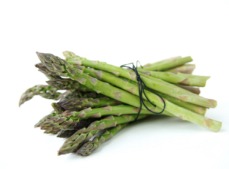Asparagus

Asparagus is another of Nature's ‘superfoods’, though not one of the cheapest. It is famed for containing high levels of essential minerals and vitamins, but as ever, this is dependent on the soil in which it is grown. Asparagus has been grown for thousands of years, originally as a medicine. Indeed there are persistent claims that it prevents cancer (it does contain an enzyme, L asparaginase that depletes a nutrient which supplies leukaemia cells and which is used in certain chemotherapies). Certainly, good quality food is medicinal and the most effective way to guard against the scourges of cancer, heart disease and Type 2 diabetes is to eat only top quality fresh produce and avoid anything processed.
Asparagus favours lighter, well drained sandy soils and it can put roots down to 1.2 metres below the soil surface, which is why large quantities are grown on sandy alluvial soils, such as those of the Lower Rhine in Germany. The problem is that light, well drained soils usually have a low Cation Exchange Capacity (CEC) and are prone to leaching nutrients. As we always point out, a plant can only take up minerals that are actually there, so the nutritional content of the asparagus, like any other plant, is ultimately dependent on the mineral content of the soil.
That said, a 100gm serving of asparagus can deliver 20% of your daily vitamin A (based on a 2000 Kcal diet), 60% vitamin K, 38% folate and a wide spread of minerals when grown in a nutrient rich soil.
The Dressing Process
Field Science tailored mineral dressings are always based on detailed soil analysis of the field to be treated. A member of our technical team will visit your farm to discuss and identify where we can help. Soil samples are then taken and the tailored dressings are based on the independent laboratory’s results.
Single Crop Dressing is the most suitable for asparagus as the dressings should be applied twice per season. The first application should be in June to assist with the formation of the ferns. The requirement for nutrition is high at the stage in the plant’s year so it is important to ensure that the nutrients are freely available. The second application should be in February to provide nutrition for the development of the stems.
The application rate is usually 25kg per hectare (10kg/ac) although this can be adjusted to suit application equipment. The dressings are packed in 25kg bags, clearly labelled with the farm details, field name, application rate and bag weight.
